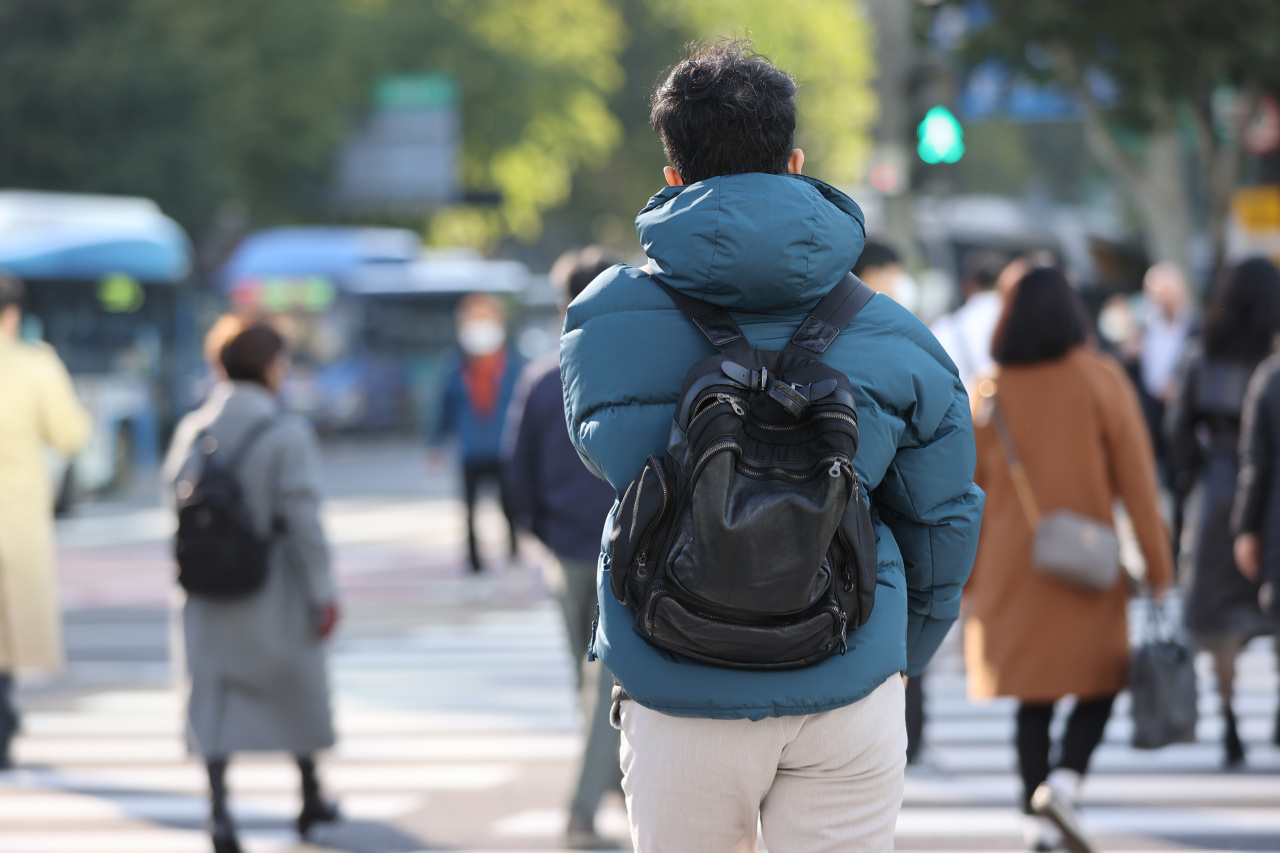 |
Pedestrians cross a street near Gwanghwamun Square in Seoul on Oct. 20. (Yonhap) |
South Korea ranked No. 4 among 38 global economies in terms of the percentage of its population living on less than half the median disposable income, data showed Monday, reflecting significant wealth disparities in the country.
According to the Organization of Economic Cooperation and Development, Asia’s fourth-largest economy posted a relative poverty rate of 16.7 percent in 2018-2019, the fourth-highest rate among its 38 member nations. In general, most OECD members are high-income economies classified as developed nations.
The figure translates into the fact that 1 out of 6 South Koreans lives in relative poverty. This year, the yardstick for 50 percent of the median disposable income here stood at 914,000 won ($781.93) for a single-person household and 2.4 million won for a household with four people.
South Korea’s relative poverty rate was 5.6 percentage points higher than the current OECD average of 11.1 percent.
Costa Rica -- the OECD’s newest member, having joined in May this year -- was No. 1 on the list with a relative poverty rate of 20.5 percent. The United States was No. 2 at 17.8 percent and Israel was next at 16.9 percent.
Behind South Korea, Japan came in at No. 5 with 15.7 percent, Italy at No. 6 with 14.2 percent and the United Kingdom at No. 7 with 12.4 percent.
Meanwhile, Iceland came in last with 4.9 percent, reflecting the country’s relatively low income inequality.
The data reminded onlookers of Netflix’s smash hit series “Squid Game,” in which players in deep financial debt participate in a death match to win a grand prize worth billions of won. The show highlights income disparity in South Korea and features characters often shunned by society and driven into poverty, including North Korean defectors and migrant workers, they said.
Experts also cited South Korea’s aging society as an additional reason for the latest relative poverty readings.
“Despite Korea’s high employment rate and relatively low jobless rate, the latest reading means that a large portion of the population does not have a job that pays them sufficient income,” said Kim Sang-bong, an economics professor at Hansung University.
“The fast transition into an aged society is a key factor,” he added.
South Korea turned into an aged society in 2017, when 14 percent of the total population was 65 years or older. In 2025, people over 65 are projected to account for 20.3 percent of the population, or 10.51 million people, and the economy will eventually be a superaged society, with 21 percent of the people in the cited age group.
South Korea has also struggled with the issue of poverty among older adults in recent years, with the poverty rate among those aged 65 and older reaching 43.4 percent in 2018. That figure was the highest among OECD members and about three times the OECD average.
By Jung Min-kyung (
mkjung@heraldcorp.com)








